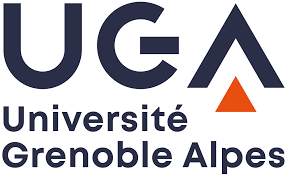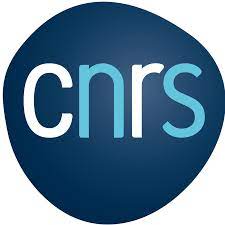Research activities/interests
• Word recognition in the visual and auditory modalities
• Reading/spelling acquisition
• Statistical learning
• Morphological processing in spelling and orthographic
acquisition
• Word segmentation in continuous speech stream
• Phonotactics, graphotactics, lexical neighborhood
• Quantitative analyses of orthography and distributional
characteristics
Past Positions
1992-2008 Laboratoire d'Etude de l'Apprentissage et du
Développement, CNRS UMR 5022, Université de Bourgogne, Dijon,
France
1991-1992 Laboratoire de Psychologie Expérimentale,
Université Libre de Bruxelles, Brussels, Belgium
Publications
• Pacton, S., & Peereman, R. (2023).Morphology as an aid in
orthographic learning of new words: The influence of inflected
and derived forms in spelling acquisition.Journal of
Experimental Child Psychology,232.
https://doi.org/10.1016/j.jecp.2023.105675
• Hilton H.E., Gauthier, M. & Peereman, R. (2022)
L’importance d’un programme lexical en didactique des langues
étrangères. Les Langues Modernes, 3. Numéro Penser, enseigner,
apprendre le vocabulaire.
https://www.aplv-languesmodernes.org/spip.php?article9206
(PDF)
• Pacton, S., Nys, M., & Peereman, R. (2022). L’influence
des connaissances graphotactiques dans l’acquisition de
l’orthographe lexicale. In Recommandations professionnelles
concernant le langage écrit. (pp. 232-237). CFO (Collège
Français d’Orthophonie).
https://www.college-francais-orthophonie.fr/les-recommandations-de-bonne-pratique/
(PDF)
• Pacton, S., Fayol, M., & Peereman, R. (2022). Le rôle des
connaissances graphotactiques et morphologiques dans
l’acquisition de l’orthographe lexicale : Le cas des contraintes
graphotactiques et des contraintes de genre dans l’utilisation
du e muet à la fin des noms. Proceedings of Rencontres
Internationales d’Orthophonie UNADREO, 1er et 2 décembre
2022.
(PDF)
• Kandel, S., Peereman, R., Ghimenton, A. & Perret, C.
(2019). Letter coding affects movement production in word
writing: An English-Italian cross-linguistic study. Special
Issue: The dynamics of written word production. Reading &
Writing, 32, 95-114.
https://doi.org/10.1007/s11145-017-9756-y
(HAL Open Science PDF)
• Pacton, S., Fayol, M, Nys, M. & Peereman, R. (2019).
Implicit statistical learning of graphotactic knowledge and
lexical orthographic acquisition. In C. Perret and T. Olive
(Eds.), Spelling and writing words. Theoretical and
methodological advances (pp. 41-66). Brill, Boston.
https://doi.org/10.1163/9789004394988_004
• Peereman, R., & Sprenger-Charolles, L. (2018).
Manulex-Morpho, une base de données sur l’orthographe du
français intégrant les morpho-phonogrammes. Numéro spécial «
Lire-écrire : des savoirs scientifiques aux savoirs pratiques ».
Langue Française, 199, 99-109.
https://www.cairn.info/revue-langue-francaise-2018-3-page-99.htm (PDF)
• Pacton, S., Afonso Jaco, A., Nys, M., Foulin, J.-N., Treiman,
R., & Peereman, R. (2018). Children benefit from
morphological relatedness independently of orthographic
relatedness when they learn to spell new words. Journal of
Experimental Child Psychology, 171, 71-83.
https://doi.org/10.1016/j.jecp.2018.02.003
• Poulin-Charronnat, B., Perruchet, P., Tillmann, B., &
Peereman, R. (2017). Familiar units prevail over statistical
cues in word segmentation. Psychological Research, 81, 990-1003.
https://doi.org/10.1007/s00426-016-0793-y
(PDF)
• Sobaco, A., Treiman, R., Peereman, R., Borchardt, G., &
Pacton, S. (2015). The influence of graphotactic knowledge on
adults’ learning of spelling. Memory & Cognition, 43,
593–604. https://doi.org/10.3758/s13421-014-0494-y
(PDF)
• Perruchet, P., Poulin-Charronnat, B., Tillmann, B., &
Peereman, R. (2014). New evidence for chunk-based models in word
segmentation. Acta Psychologica, 149, 1-8.
https://doi.org/10.1016/j.actpsy.2014.01.015
(PDF)
• Kandel, S., Peereman, R. Ghimenton, A. (2014). How do we code
the letters of a word when we have to write it? Investigating
double letter representation in French. Acta Psychologica, 148,
56-62. https://doi.org/10.1016/j.actpsy.2014.01.002
(PDF)
• Kandel, S., Peereman, R., & Ghimenton, A. (2013). Further
evidence for the interaction of central and peripheral
processes. The impact of double letters in writing English
words. Frontiers in Psychology, 4(729), 1-8.
https://doi.org/10.3389/fpsyg.2013.00729 (PDF)
• Peereman, R., Sprenger-Charolles, L., & Messaoud-Galusi,
S. (2013). The contribution of morphology to the consistency of
spelling-to-sound relations: A quatitative analysis based on
French elementary school readers. Annee Psychologique, 113,
3-33. https://doi.org/10.4074/S0003503313001012
(PDF)
• Dufour, S., & Peereman, R. (2012). Rime priming effect in
auditory word recognition: Does orthographic overlap increase
the facilitation? In N. Hsu and Z. Schütt (Eds.), Psychology of
Priming, Nova Science Publishers. Pp 155-168.
https://www.researchgate.net/publication/316070997 (PDF)
• Kandel., S., Peereman, R., Gosjacques, G., & Fayol, M.
(2011). For a psycholinguistic model of handwriting production:
Testing the syllable-bigram controversy. Journal of Experimental
Psychology: HPP, 37, 1310-1322.
https://psycnet.apa.org/doiLanding?doi=10.1037%2Fa0023094
(PDF)
• Courrier, P., Brand-D’Abrescia, M, Peereman, R., Spieler, D.,
& Rey, A. (2011). Validated intraclass correlation
statistics to test item performance models. Behavior Research
Methods, 43, 37-55.
https://doi.org/10.3758/s13428-010-0020-5
(PDF)
• Dufour, S., & Peereman, R. (2009). Competition effects in
phonological priming : The role of mismatch position between
primes and targets. Journal of Psycholinguistic Research, 38,
475-490. https://doi.org/10.1007/s10936-009-9101-y
(PDF)
• Peereman, R., Dufour, S., & Burt, J. (2009). Orthographic
Influences in Spoken-Word Recognition: The Consistency effect in
Semantic and Gender-Categorization Tasks. Psychonomic Bulletin
& Review, 16, 363-368.
https://doi.org/10.3758/PBR.16.2.363 (PDF)
• Lété, B., Peereman, R. & Fayol, M. (2008). Consistency and
word-frequency effects on spelling among first- to fifth-grade
French children : A regression-based study. Journal of Memory
and Language, 58, 952-977.
https://doi.org/10.1016/j.jml.2008.01.001 (PDF)
• Peereman, R., Lété, B., & Sprenger-Charolles, L. (2007).
Manulex-Infra: Distributional characteristics of
grapheme-phoneme mappings, infra-lexical and lexical units in
child-directed written material. Behavior Research Methods, 39,
579-589. https://doi.org/10.3758/BF03193029
(PDF)
• Dufour, S., Frauenfelder, U. H. & Peereman, R. (2007).
Inhibitory priming in auditory word recognition: Is it really
the product of response biases? Current Psychology Letters,
Behaviour, Brain & Cognition, 22, Vol. 2.
https://doi.org/10.4000/cpl.2622 (PDF)
• Peereman, R., Brand, M., & Rey, A. (2006).
Letter-by-letter processing in the phonological conversion of
multi-letter graphemes: Searching sounds in printed pseudowords.
Psychonomic Bulletin & Review, 13, 38-44.
https://psycnet.apa.org/doi/10.3758/BF03193810
(PDF)
• Perruchet, P., Peereman, R., & Tyler , M. D. (2006). Do we
need algebraic-like computations? A reply to Bonatti, Pena,
Nespor, and Mehler (2006). Journal of Experimental Psychology:
General, 135, 322-326.
https://psycnet.apa.org/doi/10.1037/0096-3445.135.3.461 (PDF)
• Poulin-Charronnat, B., Bigand, E., Madurell, F., &
Peereman, R. (2005). Musical stucture modulates semantic priming
in vocal music. Cognition, 67-78.
https://doi.org/10.1016/j.cognition.2004.05.003 (PDF)
• Perruchet, P., & Peereman, R. (2005). Apprendre sa langue
maternelle , une question de statistique ? in Pour La Science,
Janvier.
https://www.pourlascience.fr/sd/psychologie/apprendre-sa-langue-maternelle-une-question-de-statistique-3669.php
(PDF)
• Peereman R., Dubois Dunilac, N., Perruchet, P.,& Content,
A. (2004). Distributional properties of language and
sub-syllabic processing units. In: Bonin, P. (Ed.), Mental
Lexicon. NY: NovaScience Publishers.
https://psycnet.apa.org/record/2004-15128-010
(PDF)
• Dufour, S., & Peereman, R. (2004). Phonological priming in
auditory word recognition : Initial overlap facilitation effect
varies as a function of target word frequency. Current
Psychology Letters, 14, Vol. 3.
https://doi.org/10.4000/cpl.437 (PDF)
• Perruchet, P., Tyler, M.D., Galland, N., & Peereman, R.
(2004). Learning nonadjacent dependencies : No need for
algebraic-like computations. Journal of Experimental Psychology
: General, 573-583.
https://psycnet.apa.org/doi/10.1037/0096-3445.133.4.573 (PDF)
• Perruchet, P., & Peereman, R. (2004). The exploitation of
distributional information in syllable processing: What and how?
Journal of Neurolinguistics, 97-119.
https://doi.org/10.1016/S0911-6044(03)00059-9
(PDF)
• Dufour, S. & Peereman, R. (2003). Lexical competition in
phonological priming: Assessing the role of phonological match
and mismatch lengths between primes and targets. Memory &
Cognition, 31, 1271-1283.
https://doi.org/10.3758/BF03195810
(PDF)
• Dufour, S. & Peereman, R. (2003). Inhibitory priming
effects in auditory word recognition: When the target's
competitors conflict with the prime word. Cognition, 88,
B33-B44.
https://doi.org/10.1016/S0010-0277(03)00046-5
(PDF)
• Brand, M., Rey, A., & Peereman, R. (2003). Where is the
syllable priming effect in visual word recognition? Journal of
Memory and Language, 48, 435-443.
https://doi.org/10.1016/S0749-596X(02)00522-3 (PDF)
• Bonin, P., Peereman, R., Malardier, N., Méot, A., &
Chalard, M. (2003). A new set of 299 pictures for
psycholinguistic studies: French norms for name agreement, image
agreement, conceptual familiarity, visual complexity, image
variability, age of acquisition, and naming latencies. Behavior
Research Methods, Instruments, & Computers, 35, 158-167.
https://doi.org/10.3758/BF03195507
(PDF)
• Peereman, R., & Dufour, S. (2003). Un correctif aux
notations phonétiques de la base de données LEXIQUE [A
corrective to the phonetic notations of the LEXIQUE database].
L’Année Psychologique, 103, 103-108.
https://www.persee.fr/doc/psy_0003-5033_2003_num_103_1_29626
(PDF)
• Dufour, S., Peereman, R., Pallier, C., & Radeau, M.
(2002). Vocolex. Une base de données lexicales sur les
similarités phonologiques entre les mots français [VoCoLex : A
lexical database on phonological similarity between French
words]. L’Année Psychologique, 102, 725-746.
https://www.persee.fr/doc/psy_0003-5033_2002_num_102_4_29616 (PDF)
• Gombert, J.-E., & Peereman, R. (2001). Training children
with artificial alphabet. Psychology, 8, 338-357.
https://ejournals.epublishing.ekt.gr/index.php/psychology/article/view/24116/20189
(PDF)
• Bonin, P., Peereman, R., & Fayol, M. (2001). Do
phonological codes constrain the selection of orthographic codes
in written picture naming. Journal of Memory and Language, 45,
688-720. https://doi.org/10.1006/jmla.2000.2786 (PDF)
• Peereman, R., & Content, A. (1999). LEXOP. A LEXical
database with Orthography-Phonology statistics for French
monosyllabic words. Behavior Research Methods, Instruments,
& Computers, 31, 376-379.
https://doi.org/10.3758/BF03207735
(PDF)
• Content, A., & Peereman, R. (1999). La reconnaissance des
mots [Word recognition]. In J.-A. Rondal & X. Seron (Eds.),
Les troubles du langage, diagnostic et rééducation. P. Mardaga
(Ed.).
https://www.cairn.info/maitriser-la-lecture--9782738109019-page-95.htm
- (PDF)
• Bonin, P., Fayol, M., & Peereman, R.(1998). Masked form
priming in writing isolated words from pictures: Evidence for a
direct retrieval of orthographic forms. Acta Psychologica, 99,
311-328.
https://doi.org/10.1016/S0001-6918(98)00017-1 (PDF)
• Peereman, R., Content, A., & Bonin, P. (1998). Is
perception a two-way street? The case of feedback consistency in
visual word recognition. Journal of Memory and Language, 39,
151-174. https://doi.org/10.1006/jmla.1998.2573 (PDF)
• Peereman, R., & Content, A. (1997). Orthographic and
phonological neighborhoods in naming: Not all neighbors are
equally influencial in orthographic space. Journal of Memory and
Language, 37, 382-421.
https://doi.org/10.1006/jmla.1997.2516
(PDF)
• Peereman, R. (1995). Naming regular and exception words:
Further examination of the effect of phonological dissension
among lexical neighbours. European Journal of Cognitive
Psychology, 7, 307-330.
https://psycnet.apa.org/doi/10.1080/09541449508402451
(PDF)
• Peereman, R. & Content, A. (1995). The neighborhood size
effect in naming: Lexical activation or sublexical
correspondences? Journal of Experimental Psychology: Learning,
Memory, and Cognition, 21, 409-421.
https://psycnet.apa.org/doi/10.1037/0278-7393.21.2.409 (PDF)
• Peereman, R. (1994). Adressage et assemblage phonologique dans
la prononciation des mots écrits alphabétiquement [Addressing
and assembling phonology in reading words aloud]. C. Gruaz,
J.-P. Jaffré, & A. Millet, Epistémologie d'une linguistique
de l'écrit. CNRS-HESO, Histoire et structure des orthographes et
systèmes d'écriture.Liaison-HESO 23-24, 91-109, Paris. (PDF)
• Content, A., & Peereman, R. (1992). Single and multiple
process models of print to sound conversion. In Alegria, J.,
Holender, D., Morais, J. & Radeau, M. (Eds.) Analytic
Approaches to Human Cognition. Amsterdam: Elsevier.
https://www.researchgate.net/publication/236582538 (PDF)
• Peereman, R. (1992). Lecture, écritures, orthographes
[Reading, spelling, orthographies]. In: P. Lecoq (Ed.), La
lecture: processus, apprentissage, troubles. Lille: Presses
Universitaires de Lille.
https://www.septentrion.com/ (PDF)
• Peereman, R. (1991). Phonological assembly in reading: Lexical
contribution leads to violation of grapho-phonological rules.
Memory & Cognition, 19, 568-578.
https://doi.org/10.3758/BF03197152
(PDF)
• Peereman, R. (1991b). La mediation phonologique dans la
reconnaissance des mots écrits [Phonological mediation in
written word recognition]. In: R. Kolinsky, J. Morais, & J.
Segui (Eds.), La reconnaissance des mots dans les différentes
modalités sensorielles: Etudes de psycholinguistique cognitive.
Paris: Presses Universitaires de France.
https://gallica.bnf.fr/ark:/12148/bpt6k3362888p (PDF)
• Peereman, R., & Holender, D. (1990). La reconnaissance des
mots dans les écritures non-alphabétiques. Cahiers de
Psychologie Cognitive, 10, 289-339.
(PDF)
• Holender, D., & Peereman, R. (1987). The differential
processing of phonographic and logographic single-digit numbers
by the two hemispheres. In: G. Deloche & X. Seron (Eds.),
Mathematical disabilities: A cognitive Neuropsychological
perspective (pp. 43-85). Hillsdale, New Jersey: Lawrence Erlbaum
Associates.
https://www.taylorfrancis.com/ (PDF)
• Peereman, R., & Holender, D. (1985). Visual-field
differences for a number-nonnumber classification of alphabetic
and logographic stimuli. Quarterly Journal of Experimental
Psychology, 37A, 197-216.
https://doi.org/10.1080/14640748508400930 (PDF)
• Peereman, R., & Holender, D. (1984). Relation entre taille
physique et taille numérique dans la comparaison de chiffres
écrits alphabétiquement ou idéographiquement [Relation between
physical and numerical sizes in the comparison of digits
represented alphabetically and ideographically]. Psychologica
Belgica, 24, 147-164. https://doi.org/10.5334/pb.723 (PDF)
Methodological contributions available online
• Orthographic, grapho-phonological, and morphological
characteristics of written words from French elementary
textbooks. Manulex_Infra and Manulex_Morpho are
two databases describing the orthographic, grapho-phonological,
and morphological characteristics of written vocabulary in
French elementary textbooks (Peereman, Lété, &
Sprenger-Charolles, 2007; Peereman, Sprenger-Charolles, &
Messaoud-Galusi, 2013; Peereman & Sprenger-Charolles, 2018).
Both of these databases were created to assist researchers and
educators in designing literacy programs and conducting
empirical studies. The newest versions (V.2; 2021-22) of the
databases can be downloaded from the site. The Eqol_infra
database was also recently developed based on a corpus of 14,800
orthographic forms occurring in textbooks and children's
literature from Quebec (Stanké et al., 2019). The analysis of
word characteristics is similar to that of Manulex_Infra. https://inframorph.github.io/indexEngl.html
• Dufour, S., Peereman, R., Pallier, C., & Radeau, M. (2002
in L’Année Psychologique, 102, 725-746). Vocolex. Une
base de données lexicales sur les similarités phonologiques
entre les mots français. [Vocolex: A lexical database on
phonological similarity between French words].
https://rpee38.github.io/vocolex/
• Peereman, R., & Content, A. (1999 in Behavior Research
Methods, Instruments, & Computers, 31, 376-379. LEXOP. A
LEXical database with Orthography-Phonology statistics for
French monosyllabic words.
https://rpee38.github.io/lexop/
• A new set of 299 pictures for psycholinguistic studies: French
norms for name agreement, image agreement, conceptual
familiarity, visual complexity, image variability, age of
acquisition , and naming latencies (Bonin P., Peereman R,
Malardier, N., Méot A. & Chalard M., 2003).
https://rpee38.github.io/pictures299/
 Laboratoire de Psychologie et Neurocognition (LPNC)
Laboratoire de Psychologie et Neurocognition (LPNC) 


